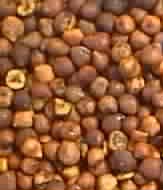 |
 |
||
|
|
About Rotuma Rotuma has been described as "one of the most beautiful, attractive, and romantic islands in the Pacific Ocean." Rotuma lies approximately 300 miles north of Fiji, on the western fringe of Polynesia. The island is of volcanic origin, comprising a land area of approximately 43 square kilometers, with the highest craters rising to heights of 850 feet. Rotuma's geographical location, at 12° 30' South latitude and 177° 40° East longitude, places it very near the intersection of the conventional boundaries of Micronesia, Melanesia and Polynesia, and traces of influence from each of these areas can be found in the physical composition, language, and culture of the island's inhabitants. Rotuma has been politically associated with Fiji since 1881, when the chiefs ceded the island to Great Britain. The language of Rotuma is unique, although it shows heavy borrowing from Tongan and Samoan. The population is approximately 2,600. First recorded European contact was in 1791, by Captain Edwards in H.M.S. Pandora, while searching for the mutineers of the Bounty. Rotuma became a favorite place for whalers to replenish their provisions, and a substantial number of sailors jumped ship there, some marrying into the local population. In the 1860s English Wesleyan and French Roman Catholic missionaries established themselves on Rotuma, and the island was divided between them along geographical lines representing a prior factional division. Antagonisms between the two sides culminated in a war in 1878. The unrest that followed led the chiefs of Rotuma's seven districts to petition Queen Victoria for annexation, and in 1881 the island was officially ceded to Great Britain. Rotuma was governed as part of the Colony of Fiji until 1970, when Fiji gained independence. Since then it has been an integral part of the Fijian polity.
The island is extremely fertile. Rotuman root crops and coconuts are famous in this part of the Pacific for their size and quality. Staples include taro, yams, tapioca, breadfruit, and bananas. Pineapples, papaya, mangoes, watermelons, and oranges are also grown in abundance to supplement the diet. Hefau trees (Calophyllum inophyllum; Tahitian = tamanu, Hawaiian = kamani, Fijian = dilo) are sacred in Rotuma; they are planted prominently on hilltops to denote chiefly burial plots. They are also prolific along the shoreline where they likely originally took root naturally after drifting on ocean currents and germinating on the beaches. Rotumans appreciate them for the shade they provide from the hot tropical sun. For more information about Rotuman culture and history visit the Rotuma Website. |
